Microfluidics the protagonist of the 13th edition of the Polymers and Medical Applications conference
On 16 May Leartiker organised a new edition of the annual Polymers and Medical Applications conference at its facilities in Markina-Xemein (Biscay), which focused on microfluidics, a multidisciplinary technology that encompasses knowledge in physics, chemistry, engineering and biotechnology. This technology studies the behaviour of fluids at the microscale, making it possible to design components using small amounts of fluid, thus simplifying their handling.
The thirteenth edition of this conference addressed various aspects of microfluidics, from Point-of-Care and Organ-a-Chip microfluidic devices, the biomaterials for their development and the technologies used for their fabrication, to the development of sensors for the detection of biological parameters; creating a space to discuss and discover the latest developments in these technologies.
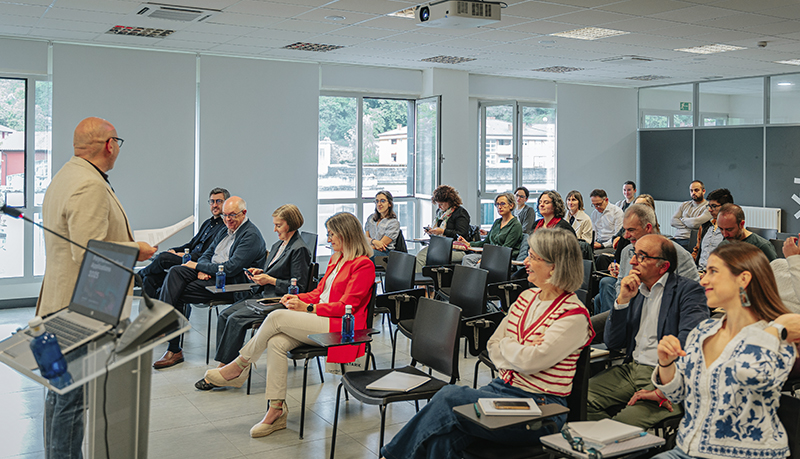
Overview of R&D&I in health sector in the Basque Country
The conference began at 9 a.m. with Jose Javier Egurrola, Scientific and Technological Director of Leartiker Tecnología de Polímeros, welcoming the attendees. He was followed by María Aguirre, head of Health and Social and Health Transition at SPRI, who spoke about the evolution of the health sector in the Basque Country, highlighting its sustained growth over the last two decades.
Aguirre showed some data on this evolution, which has gone from 17 registered bio-health companies in 2000 to more than 300 in 2024, within an ecosystem that currently groups together more than 400 entities, with more than 61,000 jobs and a turnover of more than 9,300 million euros. This development, said Aguirre, has been backed by various institutional initiatives such as the BioBasque 2010 strategy, the PCTI plans (2020 and 2030), RIS3 Euskadi and the Health Research and Innovation Strategy (2016-2020 and 2022-2025). He also reviewed the plans underway linked to the 13th Legislature, which seek to integrate health into the industrial and technological policy of the territory, through programmes such as ‘Smart Industry’ or the Strategic Industrial Plan 2025-2028.
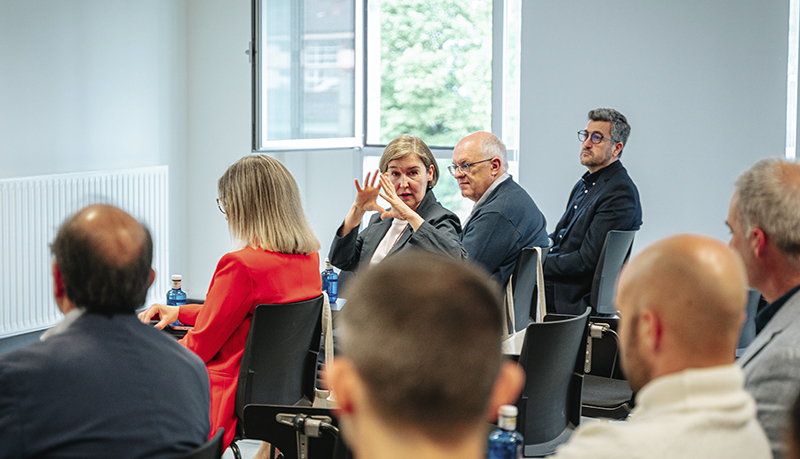
In vitro 3D models applied to personalised medicine, sensorised microfluidic platforms and their scaling up to mass production
Joaquim Miguel Oliveira, principal investigator at 3B's - Biomaterial, Biodegradables and Biomimetics Research Group, Ana Miriam Pareja, Principal Investigator at the Laboratory of Nanoelectronics, Graphene and 2D Materials (CITICUGR) at the University of Granada and Irene Varela, researcher and PhD student in the area of microfluidics at Leartiker, gave very interesting talks on the developments in materials, platforms and technologies linked to microfluidics, sensorics and large-scale manufacturing.
Next to speak was Oliveira, who presented some innovations in the development of flexible biomaterials for the fabrication of three-dimensional in vitro models integrated into lab-on-a-chip devices. This technology makes it possible to emulate biological environments essential for the study of cancer and other complex diseases. During the presentation Oliveira showed some research carried out with hydrogels and bioinks, designed to mimic the extracellular matrix (ECM), essential in bioprinting and in the creation of reproducible systems for personalised medicine applications.
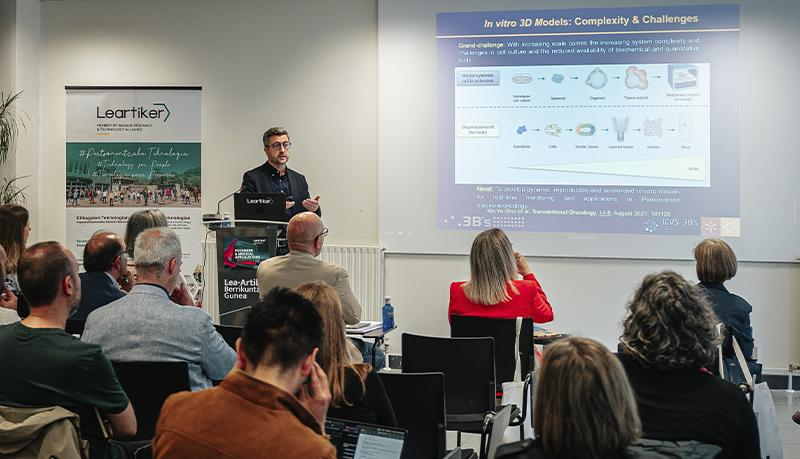
This was followed by a discussion on the development of sensorised microfluidic platforms for the detection of biological parameters by Ana Miriam Pareja. Faced with an increasingly common problem of resistant bacteria and the rise of antibiotic resistance, early detection and thus faster intervention is of vital importance. In this respect, Pareja wanted to underline the importance of biosensors as fundamental tools in the early detection of biological parameters. Thanks to their sensitivity and ability to be integrated into portable or microfluidic platforms, biosensors can identify the presence of pathogens and biomarkers with great precision and in real time.
Miriam Pareja also showed some research carried out with microchips in which miniaturised biosensors for pH detection were fabricated and a 3D tumour model was generated by recreating haemodynamic conditions relevant to metastasis inside the microfluidic device, with confirmed cell viability.

The conference included a presentation on the mass production of microfluidic devices. Irene Varela presented a detailed analysis of the potential of femtosecond laser technology as an efficient and versatile solution for the mass production of microfluidic devices made of cyclic olefin copolymer, aimed at biomedical applications. The cost-effectiveness analysis carried out has shown it to be a viable solution for the manufacture of injection moulds in large-scale production, allowing a reduction of up to 90 % in the production times of inserts compared to conventional micromachining.
According to Varela, the agility of this technology in the manufacturing process has been highlighted by its ability to adapt to different geometries, chip sizes and processes such as engraving or polishing, without having to use any specific production tools for the process. In addition, the implementation of reconfigurable moulds holders with interchangeable inserts during injection moulding further enhances the flexibility of the process, consolidating this methodology as a scalable and competitive option for the manufacture of low-cost microfluidic devices.
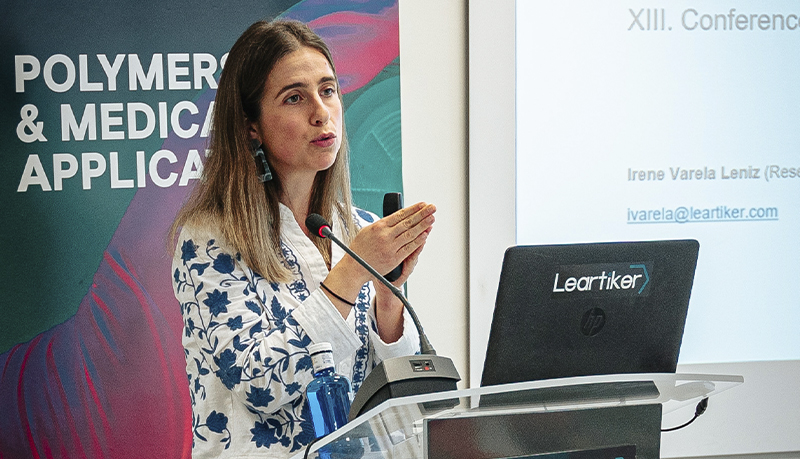
Regulation and challenges for the validation of emerging technologies in diagnostics and personalised medicine
To conclude the day, Miguel Ángel Campanero, general director of A3Z Advanced, addressed the complex regulatory challenges facing Point-of-Care microfluidic devices and Organ-on-a-Chip platforms, key technologies in the development of advanced diagnostic tools and biomedical models. Although many of these systems are not directly classified as medical devices or in vitro diagnostic (IVD) devices, their increasing use in biomedical research on human samples raises the need for clear and adapted regulatory frameworks. Campanero highlighted the regulatory differences between Europe and the US, as well as the importance of validating the data obtained in Organ-on-a-Chip models before agencies such as the FDA and the EMA. Finally, he discussed Companion Diagnostics (CDx), a particular category of IVD products that have specific and more demanding regulatory requirements in both the US and Europe.
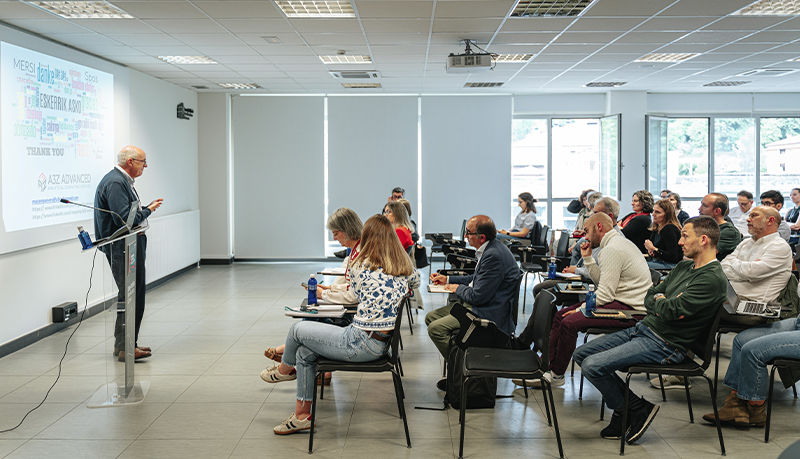
Microfluidics, a growing technology
Microfluidic technology offers indisputable advantages, which is why Lab-on-a-chip devices are becoming more and more common in disease diagnostics near the Point-of-Care patient care station, as well as Organ-on-Chip devices, which, thanks to the application of biology and tissue engineering, allow us to reproduce complex and dynamic 3D environments of the organism, accurately reflecting the structure, function and mechanical characteristics of living tissue.
The Leartiker technology centre has a line of research dedicated to microfluidics as part of its Health specialisation, and this type of event is a special occasion to disseminate the research work it carries out in this field. Thanks to the collaboration with the Basque Government in the organisation of this event, the thirteenth edition of this conference has been successfully concluded and we are already thinking about the next edition.
Video summary of the congress.

